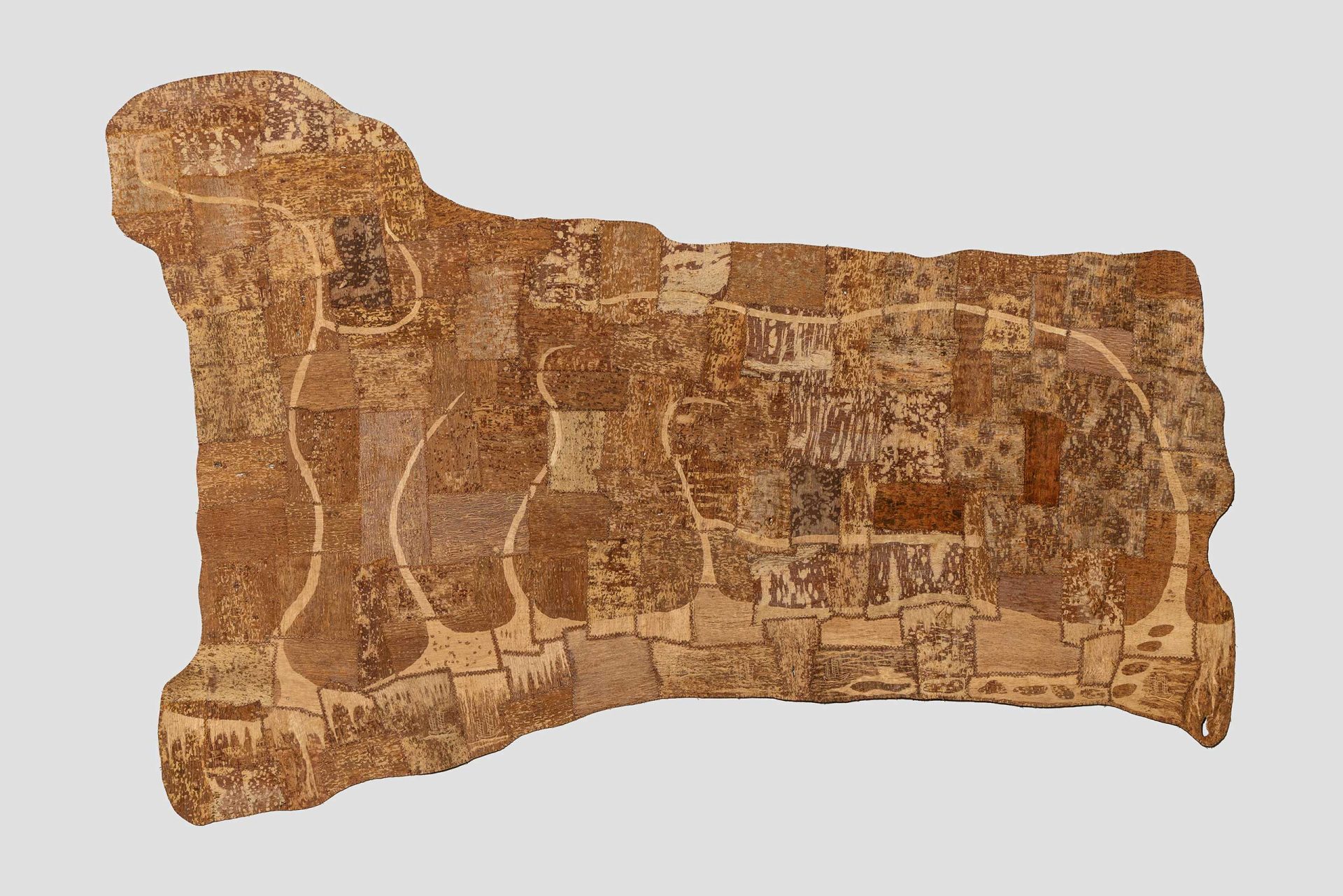Inviting Water of Deities
ka’oripan Life Space

This artwork attempts to bring together the concepts of taradaw and edaw. In the Amis language, taradaw means river, and edaw means ritual. Another thing that can be discussed is malahedaw, which means disappearance. Among these, taradaw involves a natural ecological river that has never ceased to evolve, and edaw refers to the logic of the human mind’s attempt to control everything. The artwork uses the paper mulberry bark as the main material. This species once occupied a very important position in the culture of the ancestors. The Formosan sika deer that fed on the paper mulberry was once the important economic source of an era. The paper mulberry, which itself can be used for food, medicine, rituals, celebrations, and fibers for making clothing, etc, for a very long period marked the daily life of the island’s people for a very long period. Nowadays, it appears in the most inconspicuous, even unsightly, manner at various spatial boundaries repeatedly cut by contemporary life. It is almost ubiquitous, insignificant, yet never disappears, as if it is a kind of reverse surveillance of humans, recording the growth and decline of the island. The history we hear, whether it is four hundred years or extending forward to tens of thousands or billions of years, is actually very vague. As for those subtle or dramatic changes, we may perhaps try to use logic to summarize and understand or reflect on them once more through rituals. However, returning to malahedaw, whether the disappearance of everything has significance or not cannot be answered at the moment. In the end, only through continuously remaining in place and observing the situation can we possibly catch a momentary glimpse, as if we understand;but in fact, we cannot be certain at all.
Rahic Talif
The artist’s works often embody marine cultural traits and tribal traditional spirits. His process begins with collecting mythological stories, oral histories, and exploring old tribal ruins, thereby relearning tribal wisdom. He has progressively proposed projects closely related to the ocean and islands, not only continuing his long-term focus on ethnic cultural issues but also incorporating environmental and ecological concerns. His representative projects in artistic creation include “Action Project for Typhoon” (2008), “The Space of Fifty Steps” (2013), and “The Marine Museum of Art/Indifference” (2018).
400 x 270 x 3 cm
Broussonetia papyrifera (paper mulberry) , threads
2024
